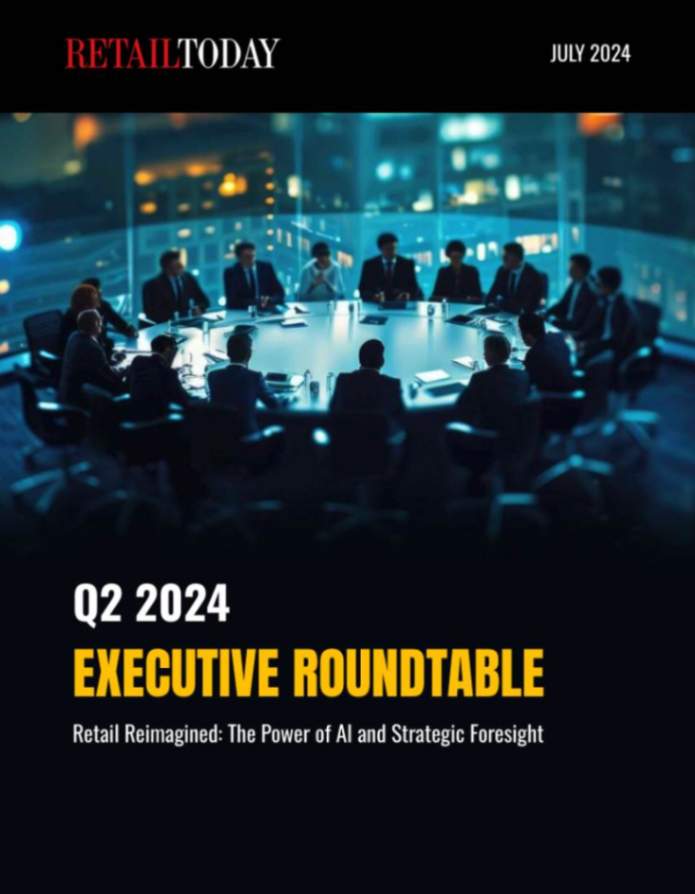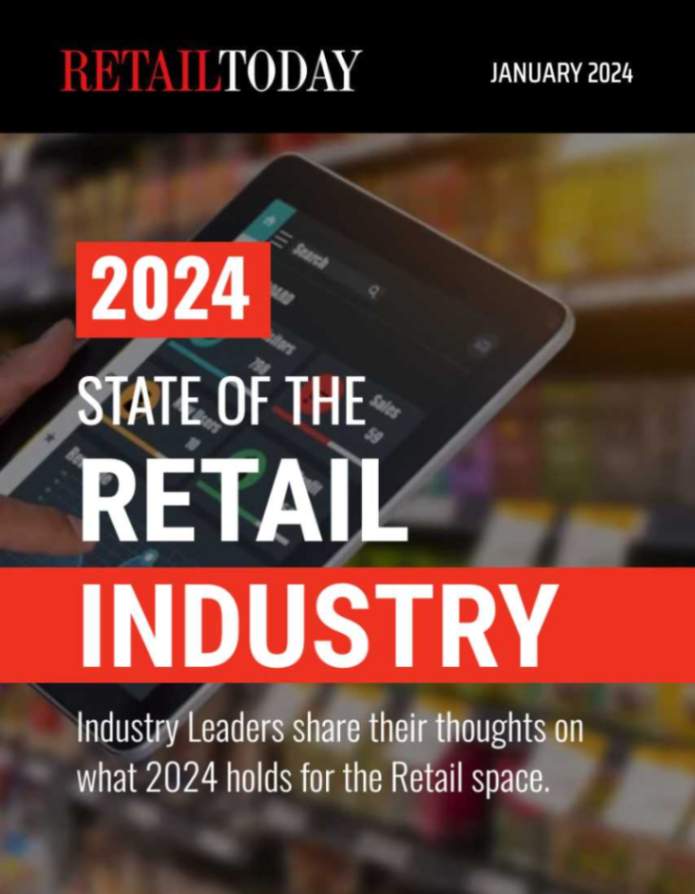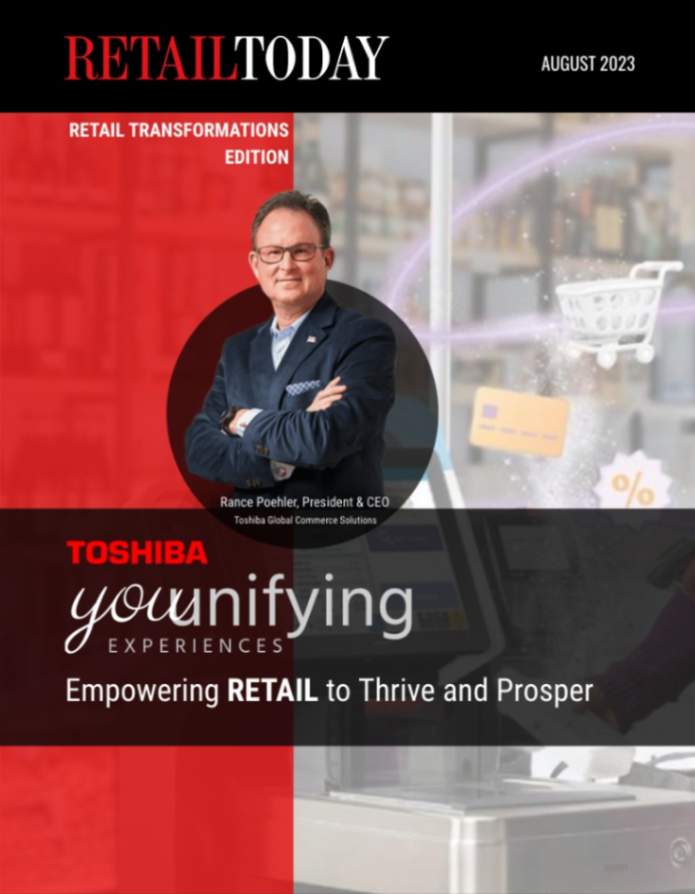
The moment a customer places an order, the post-purchase experience begins. It’s at this stage that client loyalty and memorable customer experiences are built.
Order management plays a fundamental role in the post-purchase experience. It oversees the entire fulfillment process, facilitating the click-to-door journey of a customer’s order.
The order management systems (OMSs) of 42% of US retailers need improvement. A superior OMS is crucial for success — especially for high-growth e-commerce retailers that want to scale their business, deliver products more efficiently, and ensure customer retention.
Adopting a seamless OMS is non-negotiable in today’s increasingly competitive retail landscape. This article will explore the key benefits of order management and why investing in a superior OMS is a must for business success.
What is order management (OM)?
Order management helps retailers coordinate the entire lifecycle of a customer’s order. As soon as a customer places an order, it tracks and supports that order’s progress, handling all the steps involved in fulfilling it. This includes everything from packaging and shipping to delivering the order to the customer.
Order management is a relatively simple process for brand-new businesses that handle a small number of orders. You can even manually capture, track, and fulfill daily orders.
But as your business begins to grow, the order management process becomes a lot more complex. Your business needs to track and fulfill orders from multiple sales channels, handle a high volume of such orders, track inventory levels, and more.
To streamline this process and scale up, retailers need an efficient order management system (OMS). We’ll explore the features and key benefits of an OMS later in the article, but first, let’s break down each step in the order fulfillment process.
The order management process
A typical order management process involves a few steps, each as important as the last.
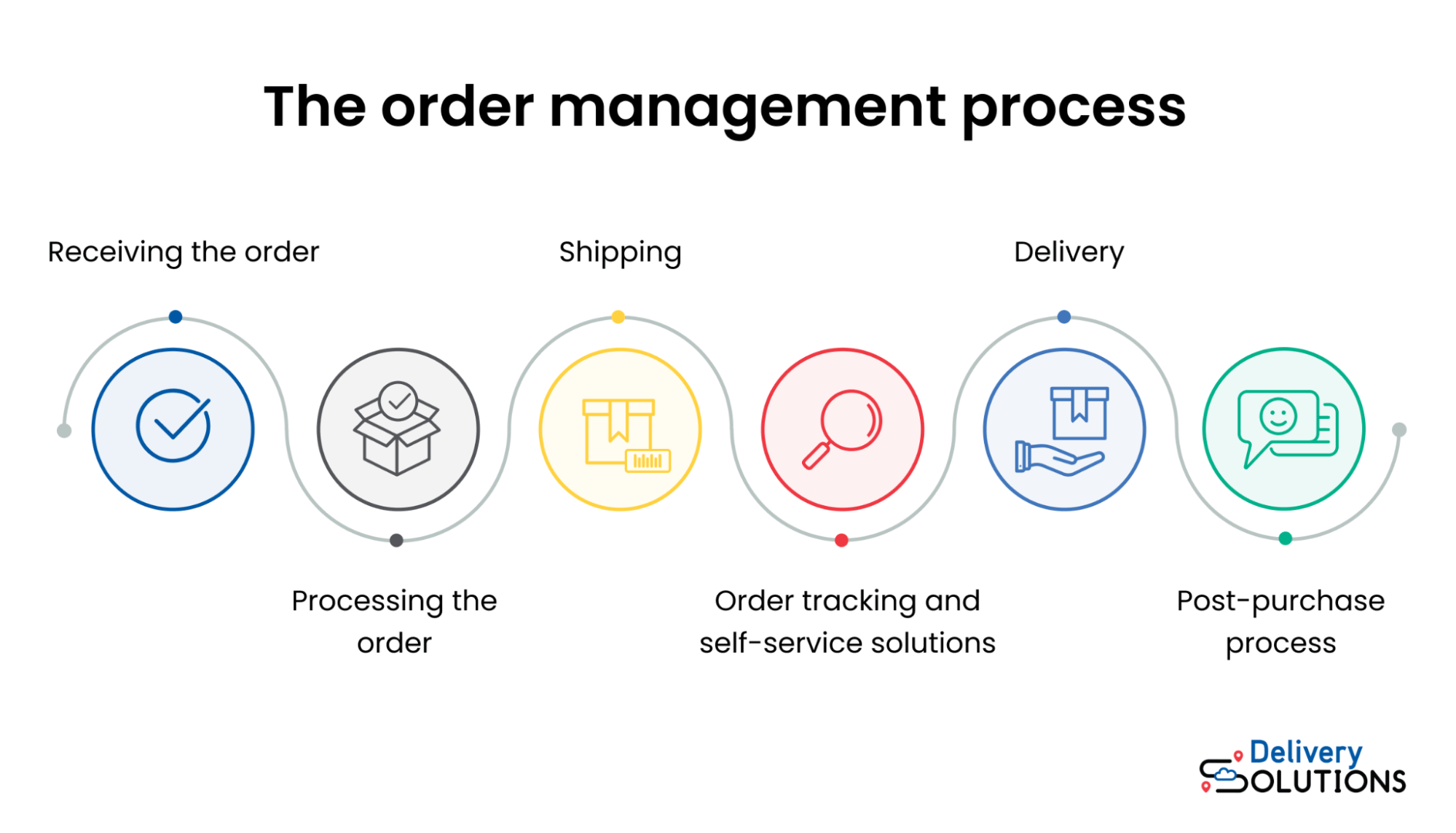
Here’s a look at the order management process:
- Receiving the order. Order management begins the second a customer clicks the virtual “Buy” button, and the business accepts and confirms the order. A confirmation is sent to both the customer and the fulfillment team so they can get the order ready for delivery.
- Processing the order. Once the shipping details are confirmed, the item is located in the warehouse and packaged.
- Shipping. The order leaves the warehouse en route to the customer. This part of the process involves printing shipping labels, marking the product as shipped, and monitoring inventory levels as they fluctuate.
- Order tracking and self-service solutions. As soon as the order is out for delivery, the customer should be notified and receive a tracking link for their parcel until it’s ready for pickup.
- Delivery. The order is delivered to the customer. A good order management system offers multiple fulfillment options, including in-store pickup or same-day delivery right to their doorstep.
- Post-purchase process. Order management doesn’t end once the order is delivered. Following up with customers, asking for feedback, and processing returns and exchanges are important steps in the post-purchase experience.
What is an order management system (OMS)?
As your retail business continues to grow, managing orders on your own is no longer efficient or productive. An order management system (OMS) is software that automates and simplifies your company’s order processing, helping it overcome fulfillment challenges.
OMS digitally tracks and manages every step of the order fulfillment process — including inventory management, order tracking, and data entry — all in one place. This kind of system allows you to scale operations, reduce costs, and fulfill orders more quickly and efficiently.

A good OMS not only streamlines and organizes orders but also elevates the consumer’s post-purchase experience. For example, delivery visibility, like order tracking, enables customers to track their orders from start to finish. This transparency reduces the dreaded “Where is my order?” requests and increases the customer’s trust in your brand.
What does OMS mean, and how does it work?
An OMS automates the flow of your fulfillment process, ensuring that your customer receives what they ordered on time. Here are the key functions of an effective OMS.
1. Inventory management and tracking
Managing inventory levels across multiple different channels is the third-biggest challenge for supply chain executives.
Order management systems offer real-time inventory management, helping you control inventory levels and avoid issues like understocking or overstocking.
Inventory tracking helps you see current demand levels, forecast product demand, and restock accordingly to ensure that you always have adequate stock to fulfill orders and keep your customers happy.
2. Automated order fulfillment
An OMS automates the entire sales process and simplifies logistics operations. It manages and executes orders seamlessly, regardless of the sales channel customers place orders on.
Once a customer places an order, it’s automatically received and recorded by your OMS, which proceeds to route the order directly to the appropriate warehouse for shipping and delivery.
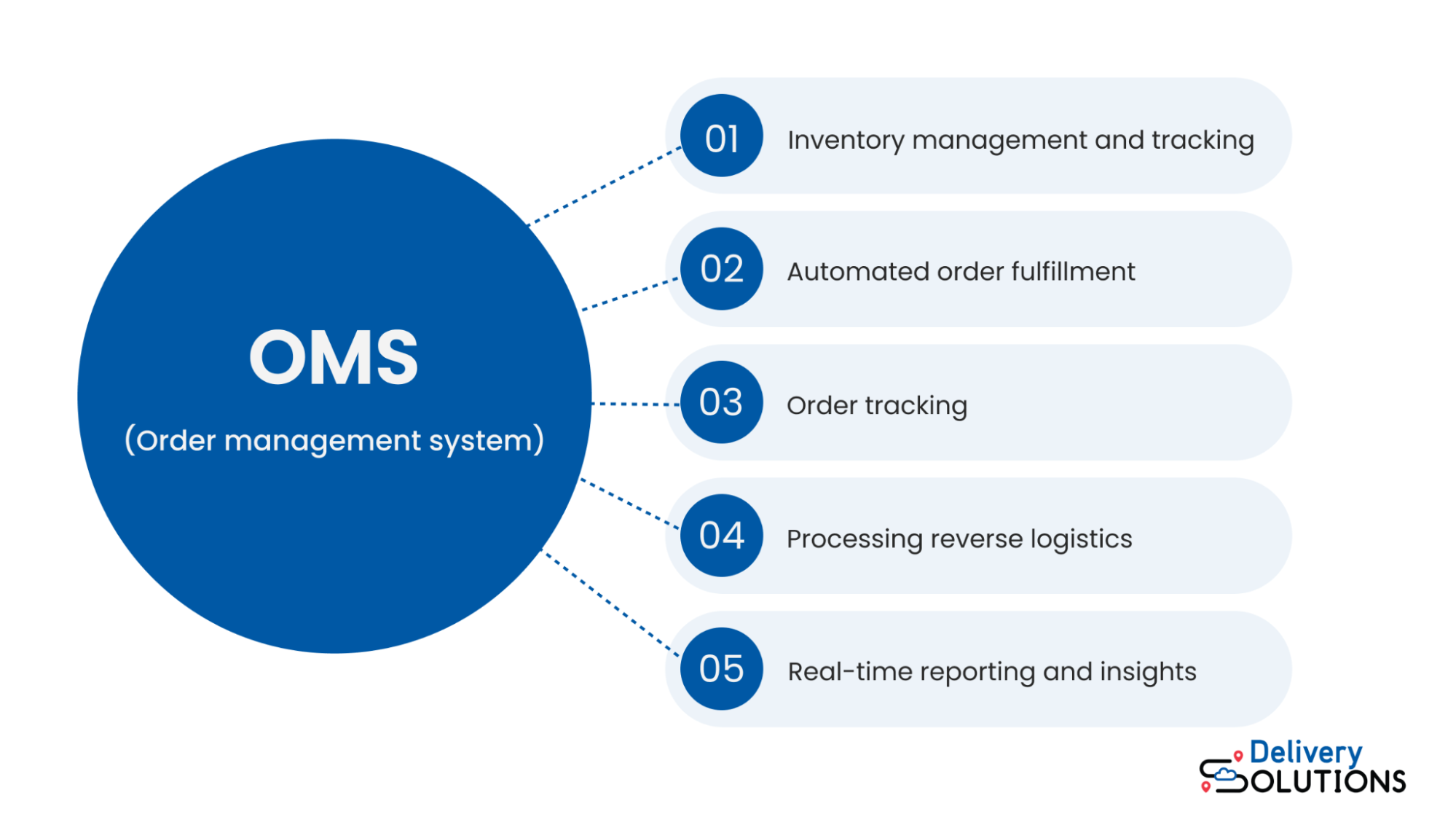
Automating order fulfillment eliminates the need for manual intervention and increases the speed and efficiency of your orders.
3. Order tracking
Tracking orders is one of the most important features of an OMS. Order tracking and monitoring are equally beneficial for both your customer support team and customers.
Internally, it enables your customer service representatives to check order statuses and answer any customer questions with ease.
At the same time, OMS order tracking keeps customers informed by providing detailed and proactive tracking updates. Considering that 57% of customers consider delivery tracking very important, keeping them in the loop improves their post-purchase experience.
4. Processing reverse logistics
Over 75% of customers say that returns are one of the most unpleasant parts of online shopping. For e-commerce retailers, offering a customer-centric returns experience is crucial for customer retention.
An OMS streamlines reverse logistics — the process of returning merchandise from the customer back to the supplier for a refund or exchange — making returns easy and reliable for customers.
When a customer wants to make a return, your OMS can automatically print return labels, quickly trigger a refund, and provide the customer with tracking information. At the same time, it can update inventory levels and return stock to the warehouse, optimizing the returns process for your business.
5. Real-time reporting and insights
One of the most valuable aspects of an OMS is its ability to analyze data and provide accurate, real-time reporting.
For example, your OMS can tell you which products are best-sellers by region or channel and spot consumer buying trends. This data can be used to forecast inventory or offer personalized marketing campaigns for different customer segments.
Why an order management system is a key differentiator for e-commerce retailers
The e-commerce industry will continue to boom — it’s now the preferred method of shopping for 68% of consumers, up from 52% in 2020. As business continues to grow and the number of orders increases, businesses need the support of an OMS system that can flawlessly orchestrate the order fulfillment process.
A customer-centric OMS is crucial for any retailer that wants to stay competitive in 2022 and beyond. Let’s explore what your business can achieve with the help of an OMS.
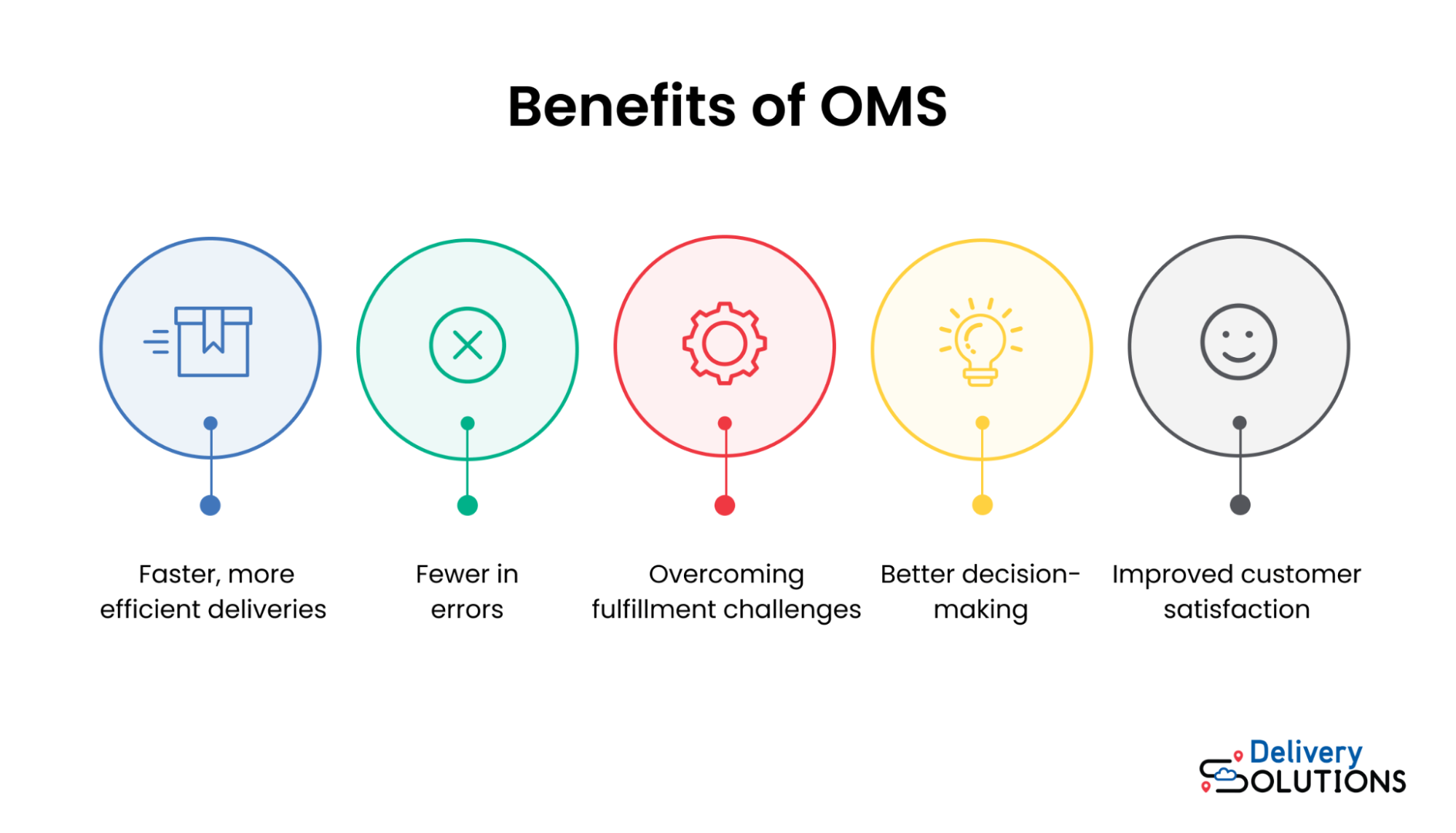
Faster, more efficient deliveries
Order management systems automate the fulfillment process, enabling businesses to become more efficient and process orders much more quickly.
Speedy delivery is one of the key aspects of the post-purchase experience for customers. It’s especially important for e-commerce retailers — 34% of customers named long delivery times as one of the main reasons they’d rather shop in-store than online.
Outsourcing order fulfillment to an order management platform that can offer faster, more efficient deliveries helps you capture more clients and meet or exceed their expectations.
Delivery Solutions offers same-day delivery to meet your customers’ growing demands. Partnering with a delivery and fulfillment solution like ours helps you increase your delivery efficiency, build brand loyalty, and reduce your operational costs.
Fewer errors
Manual order management is filled with opportunities for human error and can be extremely time-consuming. For example, accuracy errors, like picking the wrong SKU or shipping the wrong product to a customer, will leave customers dissatisfied and increase the number of returns.
Fulfillment mistakes are costly and can jeopardize your brand reputation. An automated OMS eliminates repetitive, manual work, reducing human error and increasing order accuracy. Fewer errors lead to more satisfied customers and cost savings.
Overcoming fulfillment challenges
As your business grows and your orders multiply, so will your fulfillment challenges. Delivery expectations and transportation capacity were the most common fulfillment challenges in 2021. Customers want multiple delivery options at a low cost and effective communication throughout.
Meeting these expectations is crucial to preventing customer churn and lost revenue. An outdated, manual order management process can’t overcome the increased complexity that comes with growth. That’s why leading retailers are taking a strategic approach by relying on OMSs that can handle complex fulfillment operations.
Better decision-making
A unified OMS offers data and insights into customers, sales patterns, inventory, and more.
Retailers can use this information to make data-driven decisions, track what’s working, and identify areas for improvement in the order fulfillment process. This valuable data will help you amplify your company’s growth and get a leg up on competitors.
Your OMS can track user behavior when customers make returns, helping you reduce future returns. For example, if a specific product is being returned more frequently than others, the return reasons provided by your customers should tell you why. If customers say the product doesn’t match the description, you can use this information to replace the product image with a more accurate one or adjust the item description.
Thanks to data collected by your OMS, you can easily identify and fix problems in real time.
Improved customer satisfaction
Customers expect a consistent and seamless experience, whether they’re shopping online or in a physical store. By unifying the fulfillment experience into one single interface, the OMS synchronizes customer information from all sales channels. Customers can buy a product through the mobile app, pick it up in-store, and return it from anywhere.
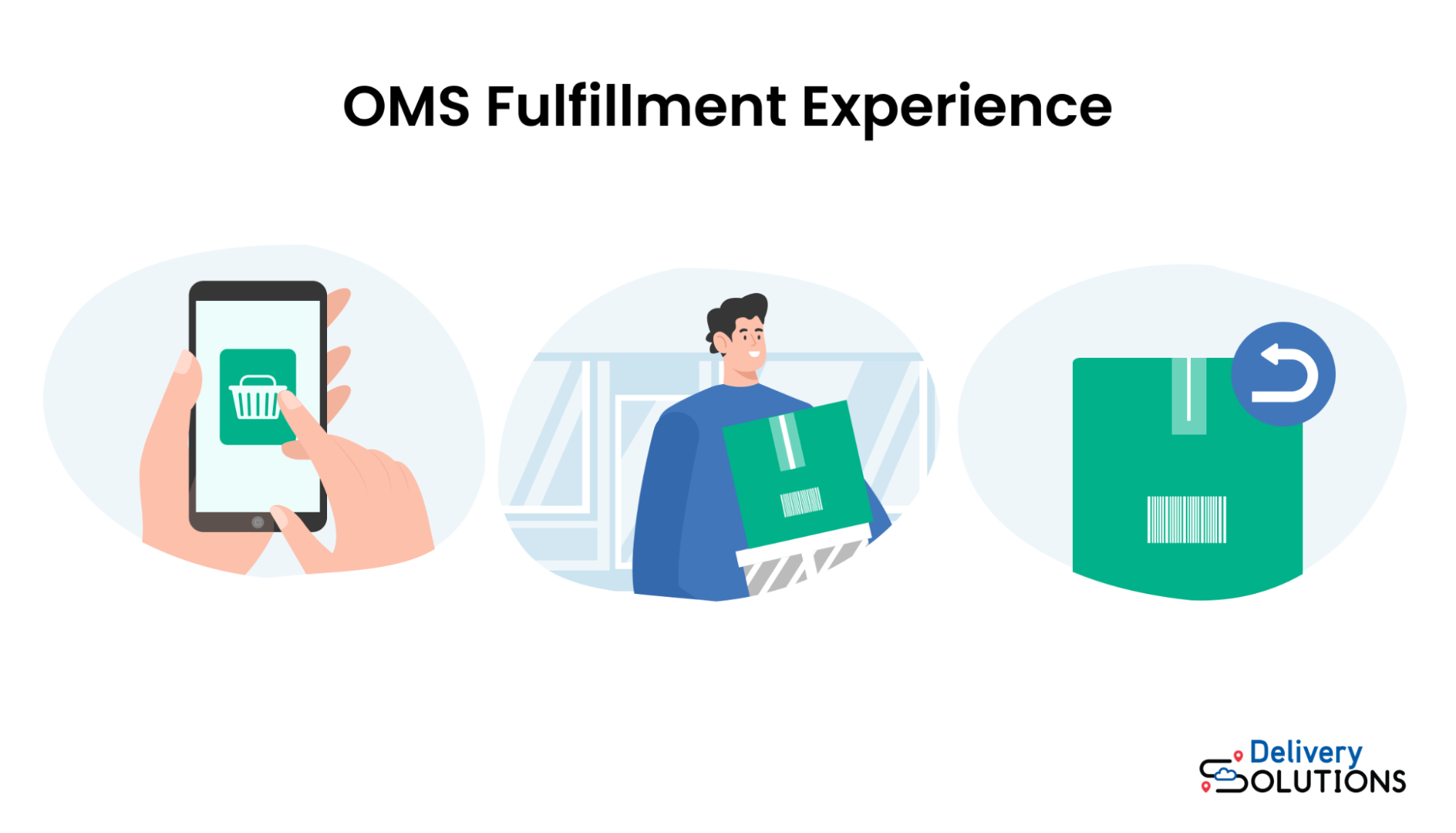
Omnichannel order management creates a smooth experience for each customer.
Why OMS is essential for your omnichannel strategy
An omnichannel approach to retail provides customers with a unified shopping experience.
As we mentioned above, modern customers use different sales platforms to buy a product, including physical and online stores, mobile apps, and call centers. They want the ability to seamlessly navigate across these channels, and for a business, that’s a lot to orchestrate. At the same time, customers expect multiple fulfillment options and an effortless returns and exchange process.
Integrated order management is essential for handling the complexity of the omnichannel customer experience and maintaining your brand reputation. It simplifies orders, inventory management, fulfillment, delivery, and reverse logistics.
How Delivery Solutions can help
Delivery Solutions is a unique omnichannel delivery operating system that supports your omnichannel strategy. Our platform uses a single connectivity tool to seamlessly orchestrate the entire fulfillment experience, from purchase to delivery.
But unlike competitors with single service offerings, Delivery Solutions enables leading retailers to provide customers with multiple delivery options, enhancing their post-purchase experience. With the help of a multi-provider network, you’ll be able to offer solutions like shipping, same-day delivery, in-store or curbside pickup, and returns.
Visit our Delivery Orchestration map to visualize how we help retailers streamline their order management and exceed customer expectations.
Conclusion
A customer-centric order management system is a key driver of success for modern retailers. OMS empowers businesses to compete in a growing and competitive e-commerce environment and drive efficient growth.
An innovative OMS like Delivery Solutions can help your business transform its order fulfillment process and enrich your customers’ delivery experience.
The Omnichannel Experience Management (OXM) Platform by Delivery Solutions orchestrates fulfillment experiences for enterprise retailers, supplying flexible optionality for consumers and priming merchants for innovation at scale.
Krisan Dhanaraj is the Director of Customer Relations at Delivery Solutions. He leads a team of customer relations professionals ensuring the consistent and on going communications with our enterprise customers.



